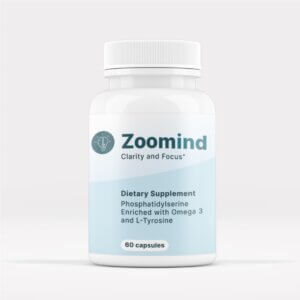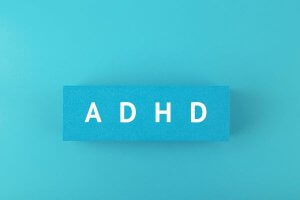 Attention-deficit/Hyperactivity Disorder (ADHD) is one of the most common neurodevelopmental conditions in children and adolescents, affecting roughly 10% of U.S. kids at some point in their lives. Despite its prevalence and decades of research, ADHD remains widely misunderstood. Misconceptions about ADHD, from questioning its reality to blaming parents or labeling kids as “lazy”, can prevent young people from getting the support they need. Below, we explore and debunk some of the most common myths about ADHD, focusing on children and teens, while also noting adult perspectives where relevant. In each section, we are trying to identify the most frequent mistakes, and to highlight expert insights and research findings to set the record straight.
Attention-deficit/Hyperactivity Disorder (ADHD) is one of the most common neurodevelopmental conditions in children and adolescents, affecting roughly 10% of U.S. kids at some point in their lives. Despite its prevalence and decades of research, ADHD remains widely misunderstood. Misconceptions about ADHD, from questioning its reality to blaming parents or labeling kids as “lazy”, can prevent young people from getting the support they need. Below, we explore and debunk some of the most common myths about ADHD, focusing on children and teens, while also noting adult perspectives where relevant. In each section, we are trying to identify the most frequent mistakes, and to highlight expert insights and research findings to set the record straight.
Introduction: Why are there so many misconceptions about ADHD, and why do they persist?
Despite being one of the most researched neurodevelopmental conditions, ADHD remains surrounded by myths and misconceptions. One key reason is its complexity; ADHD doesn’t show up the same way in everyone. Symptoms like inattention, impulsivity, and hyperactivity can vary widely, not only from person to person but even within the same individual over time, depending on the environment, activity, time of day, and sometimes even seemingly from the way the wind is blowing. This inconsistency often leads people to question the validity of a diagnosis or assume that the behavior is intentional.
ADHD is also a diagnosis based on behavior. It’s not based on a blood test or brain scan, making it more vulnerable to subjective interpretation and cultural or gender bias. Misunderstandings arise because its symptoms overlap with other common issues like anxiety, learning disabilities, or even normal childhood exuberance. In girls and in inattentive types, symptoms may be quieter and more easily missed. As children grow, their symptoms may shift. For example, hyperactivity might evolve into inner restlessness, giving rise to the false idea that someone has “outgrown” the condition.
Media portrayals, outdated stereotypes, and the stigma surrounding mental health further distort public understanding. Without clear, consistent education about what ADHD really is, and isn’t, it’s no wonder the myths persist. Debunking them is the first step toward better support and outcomes.
ADHD isn’t a real disorder
Some people claim that ADHD is not a “real” medical condition and that it’s just an excuse for bad behavior or a label given to normal kids.
The reality is that ADHD is very much a real, biologically based disorder recognized by major medical research centers and support organizations. It has been documented in medical literature for decades and extensively studied in modern science.
ADHD is overdiagnosed “normal kid” behavior
Some critics argue that ADHD is overdiagnosed nowadays, suggesting that fidgety or rambunctious children are being mislabeled. A related misconception is “every kid is a little ADHD”, which implies that the symptoms are just typical childhood traits.
The reality is that while it’s true that ADHD diagnoses have increased over time, this doesn’t mean the condition is a sham. Improved awareness of the condition and better screening have helped identify children who in the past would have been overlooked. Most diagnoses are made carefully by professionals using established guidelines. While active, distractible behavior can be normal, ADHD is distinguished by the frequency, severity, and impairment of these symptoms. Children with ADHD struggle far more than their peers in multiple settings (school, home, etc.), to a degree that exceeds typical behavior for their age.
ADHD is the result of bad parenting 
A persistent misconception is that ADHD behaviors result from weak parenting, a lack of discipline, or even too much sugar and screen time. In this view, a child who is out of control is simply “undisciplined,” and better parenting could have prevented it.
The reality is that parenting style does not cause ADHD. Decades of research point to genetics and brain development as the primary causes of ADHD, and not upbringing. Brain scans show structural and functional differences in kids with ADHD, indicating that the disorder arises from neurobiology, not a child’s environment. As CHADD (Children and Adults with ADHD) emphasizes, “parents do not cause ADHD.” Rather, the condition “comes from the accumulation of many environmental and genetic risk factors”. In other words, a parent can’t wish or discipline away the wiring of their child’s brain.
ADHD affects mostly boys
The stereotype picture of ADHD is a hyperactive little boy. This feeds the myth that boys get ADHD but girls rarely do, or that ADHD in girls is not a concern. Some even believe a girl who is doing okay in school couldn’t possibly have ADHD.
The reality is that girls have ADHD too. In fact, research indicates they are just as likely to have ADHD as boys. The reason far more boys are diagnosed (boys are about 2–3 times more frequently identified) is partly because ADHD often looks different in girls. Girls are less likely to be the disruptive, hyperactive class clown. Many have the inattentive form of ADHD, characterized by daydreaming, disorganization, and quietly struggling to focus. These symptoms are easier to overlook because they don’t cause the same classroom turmoil. As a result, girls with ADHD often fly under the radar. They may be mislabeled as reserved, shy, or just not trying hard enough, when in fact they have the same attention regulation challenges as the loud boys.
If a child isn’t hyperactive, they don’t have ADHD
A very common misunderstanding is that all kids with ADHD are hyperactive and constantly on the go. People assume that a child who is not visibly overactive, for example, one who can sit quietly or doesn’t act out, cannot have ADHD.
The reality is that not all children with ADHD are hyperactive. ADHD actually comes in three different presentations: some individuals have predominantly inattentive ADHD (what used to be called “ADD”), some have hyperactive-impulsive type, and others have a combined type. Kids with the inattentive type struggle significantly with focus, follow-through, and organization, but they might not be fidgety or loud. As a result, their ADHD can be easily missed. Many girls (and some boys) fall into this category. They may appear calm or spaced-out rather than hyper, leading teachers and parents to overlook their chronic inattention and disorganization.
Kids with ADHD can focus (when they want to)

The reality is that ADHD is not a zero-sum lack of attention – it’s better understood as dysregulated attention. Children with ADHD can indeed focus intensely on things that interest or stimulate them, a phenomenon often called hyperfocus. For instance, a teen with ADHD might get absorbed in building Lego structures or drawing for a long time, yet the same child cannot stay on task with boring homework for more than a few minutes. High-interest or high-stimulation activities (video games, exciting projects, interactive learning) trigger strong focus, whereas routine or low-stimulation tasks (like repetitive schoolwork or chores) fail to hold the brain’s attention. The key point is that the presence of occasional laser-focus on preferred activities does not mean the child doesn’t have ADHD; it simply illustrates the unique way ADHD works.
People with ADHD are lazy or less intelligent
Because children with ADHD often struggle in school or forget to complete tasks, some observers conclude that they are lazy, not trying hard enough, or even “not very smart.” This conflates ADHD-related performance issues with a lack of ability or effort. Teens with ADHD may be mislabeled as underachievers who just need to “apply themselves.”
The reality is that ADHD has nothing to do with intelligence. In fact, individuals with ADHD span the full range of IQ and many are highly intelligent or creatively gifted. The challenges seen in ADHD are due to difficulties in executive function, not a lack of intellect or character. Neuroscience shows that ADHD is linked to underactivity in certain brain regions like the prefrontal cortex that are responsible for planning, organization, and impulse control. When these executive functions are impaired, a child might fail to finish homework, lose track of time, or appear unmotivated but the reality is that people with ADHD truly want to succeed but may struggle to initiate and complete tasks”.
Children will outgrow ADHD
Many believe that ADHD is just a phase of childhood and assume that kids who struggle with attention will naturally grow out of it by the time they reach their late teens or adulthood. This leads to the belief that adult ADHD doesn’t exist, or that any adult claiming to have ADHD is just making excuses.
The reality is that ADHD can be a lifespan condition for a significant number of individuals. While some children experience a reduction in symptoms as they get older, the majority continue to have ADHD in adolescence, and a substantial portion carry it into adulthood. Long-term studies have found that more than 70% of kids with ADHD still show symptoms in their teenage years, and roughly 50% continue to have ADHD in adulthood. The symptoms may evolve, but that doesn’t mean the ADHD is cured.
ADHD medication is dangerous and can lead to addiction
Among the most pervasive myths is that stimulant medications (like Ritalin or Adderall), commonly used to treat ADHD, are essentially “legal drugs” that turn kids into zombies or predispose them to substance abuse later in life. Parents may worry that giving a child medication for ADHD will make them addicted or change their personality.
The reality is that when used as prescribed under medical supervision, ADHD medications are generally considered safe and effective. These medications have been in use for decades with a good track record of improving symptoms in a majority of patients. However, it’s always worth remembering that these medicines do not cure ADHD, but rather they help normalize brain functioning for a period of time, allowing people with ADHD to focus and control impulses better.
Of course, stimulant medications are not the only treatment for ADHD. A lot of serious research has gone into finding ways to address the symptoms of ADHD with diet, behavioral therapy, parent training, and school support. It’s also essential to keep in mind that failing to treat ADHD can have serious consequences as a younger person matures and has to face significantly changed challenges without the support of parents and familiar living conditions.
One of the most promising channels has been to supply boosted levels of some of the essential nutrients that go straight into the brain and there address deficiencies that are known to trigger ADHD. Dopamine is a neurotransmitter that has a direct effect on ADHD, and the levels of dopamine are directly dependent on the supply of omega-3 to the brain. Research has shown that increasing the levels of polyunsaturated fatty acids (PUFAs) in food intake will have beneficial effects for people with ADHD. Omega-3 is not produced in the body itself, but must be part of the diet. Getting sufficient omega-3 from a standard diet is not a viable option for most people, so the alternative of dietary supplements with high levels of omega-3, especially with the compounds known to be most helpful for alleviating symptoms of ADHD, eicosapentaenoic acid (EPA) and docosahexaenoic acid.
A simple dietary supplement such as Zoomind will deliver omega-3-rich phosphatidylserine supplemented with EPA. Another ingredient, phosphatidylserine works to keep the mind and memory sharp and this enhances the activity of the dopamine neurotransmitters.
So, what DO we know about ADHD?
Attention-deficit/Hyperactivity Disorder is a legitimate, neurodevelopmental condition recognized by every major medical and psychological authority, including the CDC, the American Academy of Pediatrics, and the American Psychiatric Association. It is caused by differences in brain structure, chemistry and function, especially in areas that govern attention, impulse control, and executive functioning. While the core symptoms of inattention, impulsivity, and hyperactivity can vary in expression and intensity, they are real, persistent, and often interfere with everyday functioning. The misconceptions about ADHD arise mainly from the fact that it can’t be diagnosed by direct examination of the physical person, and so the symptoms are subject to misinterpretation and bias.
Frequently Asked Questions
What is the hardest age for a child with ADHD?
Although every child has their own experiences, the most difficult time for a child with ADHD is when they begin attending larger social environments, like kindergarten and early school. The child’s life is affected by external reactions to his or her behaviour and by societal expectations. Understanding how the child’s behaviour interacts with the external reactions to this behaviour will help to make sense of the complexities of ADHD and why the early years are so important.
Why are early school years so tough?
Moving from home to the structured kindergarten and first grade classrooms is an important time for children with ADHD. These years are especially hard. Children with ADHD are at a crucial point in their lives in kindergarten and first grade. The child enters a setting where they meet a wide range of people who all have their own expectations and biases. Teachers are one of the main people who help to define how a child with ADHD is viewed. If a teacher doesn’t know much about ADHD, they might view a child’s behavior as disobedience or lack of discipline instead of as symptoms of ADHD. But some children in the class may have trouble finishing their work on time. Because of this, many people with some ADD may struggle to learn in school, and their teachers will often unintentionally view the child as being stupid and set the child’s expectations lower. Actually, the opposite is true: there is no evidence of any link between intelligence and ADHD. There is no research evidence to indicate that the incidence of ADHD is limited to people of any one intellectual level, and some individuals with ADHD have high IQs. “There is significant overlap of characteristics among people with ADHD, high IQ, and creativity.”
Do people with ADHD suffer from negative external influences?
There is a danger that, without understanding that a child with ADHD is normal, there is a continuation of the feeling of being different as the child moves into the middle years of school and the first few years after high school. At that time children and teenagers face the greatest number of tasks that have to be done and deadlines that have to be met, and they have the least amount of freedom to avoid tasks that they are having trouble with or find uninteresting.








